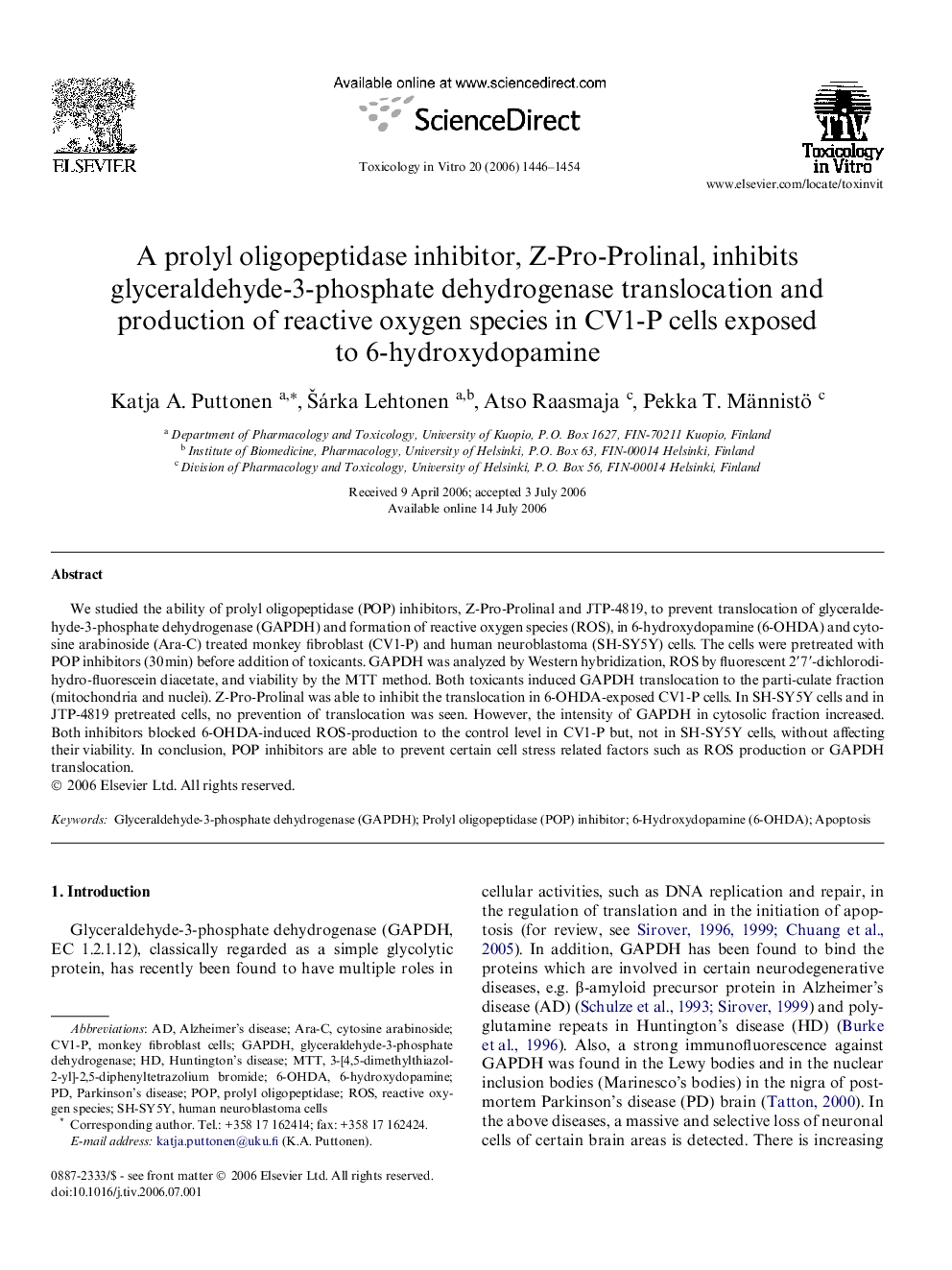| Article ID | Journal | Published Year | Pages | File Type |
|---|---|---|---|---|
| 2603587 | Toxicology in Vitro | 2006 | 9 Pages |
We studied the ability of prolyl oligopeptidase (POP) inhibitors, Z-Pro-Prolinal and JTP-4819, to prevent translocation of glyceraldehyde-3-phosphate dehydrogenase (GAPDH) and formation of reactive oxygen species (ROS), in 6-hydroxydopamine (6-OHDA) and cytosine arabinoside (Ara-C) treated monkey fibroblast (CV1-P) and human neuroblastoma (SH-SY5Y) cells. The cells were pretreated with POP inhibitors (30 min) before addition of toxicants. GAPDH was analyzed by Western hybridization, ROS by fluorescent 2′7′-dichlorodihydro-fluorescein diacetate, and viability by the MTT method. Both toxicants induced GAPDH translocation to the particulate fraction (mitochondria and nuclei). Z-Pro-Prolinal was able to inhibit the translocation in 6-OHDA-exposed CV1-P cells. In SH-SY5Y cells and in JTP-4819 pretreated cells, no prevention of translocation was seen. However, the intensity of GAPDH in cytosolic fraction increased. Both inhibitors blocked 6-OHDA-induced ROS-production to the control level in CV1-P but, not in SH-SY5Y cells, without affecting their viability. In conclusion, POP inhibitors are able to prevent certain cell stress related factors such as ROS production or GAPDH translocation.
